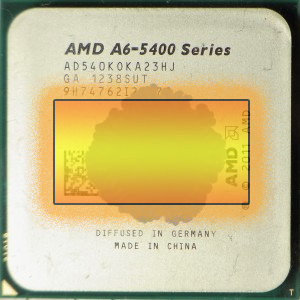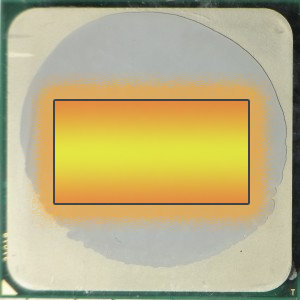Thermal Paste Comparison, Part One: Applying Grease And More
If you find yourself fighting a stubbornly-low overclock, there's a chance that your thermal solution isn't working as effectively as it should. We're testing a number of thermal pastes that might help. But first, let's go over the basics of CPU cooling.
Applying Thermal Paste, Part Two
The "drop" or "blob" method can be used by both newbies and enthusiasts, and it even works with high-viscosity pastes, assuming you are using a quality cooler that applies plenty of mounting pressure.


Don’t apply too little paste for fear of overdoing it. The compound might end up not covering the hot spot, hurting thermal conductivity and leading to an overheated CPU.
Take the type of cooler into account, too. An aftermarket heat sink with a back plate, which is screwed down, can tolerate less paste than AMD's "hook a clip and flip a lever" or Intel's "four push-pin" sinks. When you use pastes with higher viscosity, you want a cooler able to apply more pressure, and it's alright to use more paste. Of course, when we say more, we mean a little, not an extra-generous slathering.


The picture above shows a near-optimum spread; we wound up with a thin layer that completely covers the die. Since it didn’t reach the edges, we know we didn't use too much paste, and that it wasn't applied too thick. If you know how large a pea is, beware of literally using a pea-sized blob. A paste ball about 1/10” to 1/6” in diameter should be enough; don’t use more than that! We're talking about a lentil-sized ball here.
Last But Not Least: Don’t Panic!
CPU manufacturers also believe in a less-is-more philosophy, as evidenced by their boxed coolers. For instance, AMD’s heat sink only touches about two-thirds of the heat spreader. The stencil-printed paste sports a high viscosity. It's almost solid, and it doesn't spread outwards (the sink's mounting pressure is relatively low). But this method obviously gets AMD’s blessing.
Why do I mention this cheap boxed cooler? To allay fears and to encourage a healthy do-it-yourself sprit. Yes, two decades ago I also had my doubts about mounting aftermarket CPU coolers. But I encourage you to try it with an ounce of preparation, a sprinkle of can-do attitude, and a pinch of carefulness. Nothing will go wrong.
Current page: Applying Thermal Paste, Part Two
Prev Page Applying Thermal Paste, Part One Next Page Why Do We Test Each Paste In Four Scenarios?Get Tom's Hardware's best news and in-depth reviews, straight to your inbox.

Igor Wallossek wrote a wide variety of hardware articles for Tom's Hardware, with a strong focus on technical analysis and in-depth reviews. His contributions have spanned a broad spectrum of PC components, including GPUs, CPUs, workstations, and PC builds. His insightful articles provide readers with detailed knowledge to make informed decisions in the ever-evolving tech landscape
-
alidan please tell me yo are also going to do the solder the heatsink to the cpu method? i forget what its called, but that is what i want to use for my next computer and would love to see how it stacks up.Reply -
The Von Matrices In the second section about advanced cooling methods, are you planning on discussing delidding CPUs and replacing thermal paste? If you do it might be worth mentioning that the delidding won't improve temperatures because of improved thermal paste conductivity but because of reducing the thickness of the paste. See http://forums.anandtech.com/showpost.php?p=34053183&postcount=566Reply -
stickmansam Huh, I do turn my heatsinks sometimes for optimal alignment so the heat pipes are perpendicular to the die. Depends if I got the room in the case and what ram is being used. Also heatsink dependentReply -
slatts1024 One of the best articles I've read on Tom's in years and that's saying something. Looking forward to part 2.Reply -
Shankovich Loving that DHT-based design overlay picture on the first page. I've been telling my friends for a while to just get coolers with plated covers because the pipes miss the hotspot on intel CPU's, but no I'm full of bs apparently. This video is awesome btw, shows how spreads happen http://www.youtube.com/watch?v=EyXLu1Ms-q4Reply -
nukemaster How many volts does this "7 volt" unregulated power supply put out?Reply
Just curious. I have some 8/9/12 volt regulators that would eliminate the guessing games for resistor fan adapters(voltage depends on the fans current draw).
I have seen unregulated 6 volt power supplies range from 8-over 12 volts at low loads.
For a rather low price you can use a regulator to get whatever voltage you want :)
ohh yeah and...
I can't wait for the next part of this to be release -
jimmysmitty From what I have seen it depends on the materials. AS5 was great for a while but thee are better ones out than that now such as Noctuas or Zalmans.Reply
I also enjoyed using the IC Diamond thermal paste as it proved to cool very well but since it has a diamond based substance it can scuff the heat spreader.
